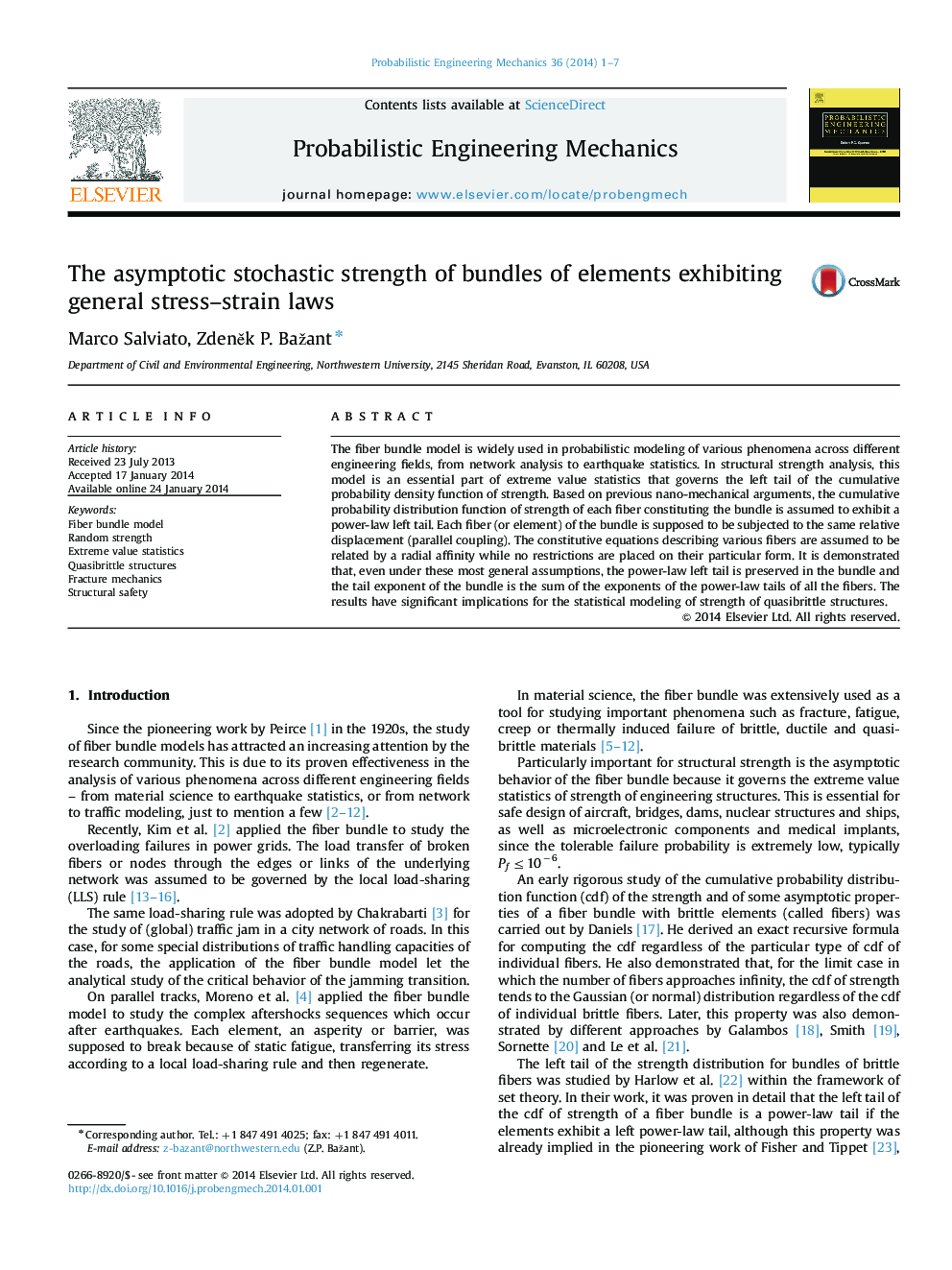| Article ID | Journal | Published Year | Pages | File Type |
|---|---|---|---|---|
| 806074 | Probabilistic Engineering Mechanics | 2014 | 7 Pages |
•The power-law left tail is preserved.•The tail exponent is the sum of the exponents of the power-law tails of each fiber.•These asymptotic properties of the fiber bundle model have general validity since no assumptions are made on the particular constitutive behavior of each fiber.
The fiber bundle model is widely used in probabilistic modeling of various phenomena across different engineering fields, from network analysis to earthquake statistics. In structural strength analysis, this model is an essential part of extreme value statistics that governs the left tail of the cumulative probability density function of strength. Based on previous nano-mechanical arguments, the cumulative probability distribution function of strength of each fiber constituting the bundle is assumed to exhibit a power-law left tail. Each fiber (or element) of the bundle is supposed to be subjected to the same relative displacement (parallel coupling). The constitutive equations describing various fibers are assumed to be related by a radial affinity while no restrictions are placed on their particular form. It is demonstrated that, even under these most general assumptions, the power-law left tail is preserved in the bundle and the tail exponent of the bundle is the sum of the exponents of the power-law tails of all the fibers. The results have significant implications for the statistical modeling of strength of quasibrittle structures.
